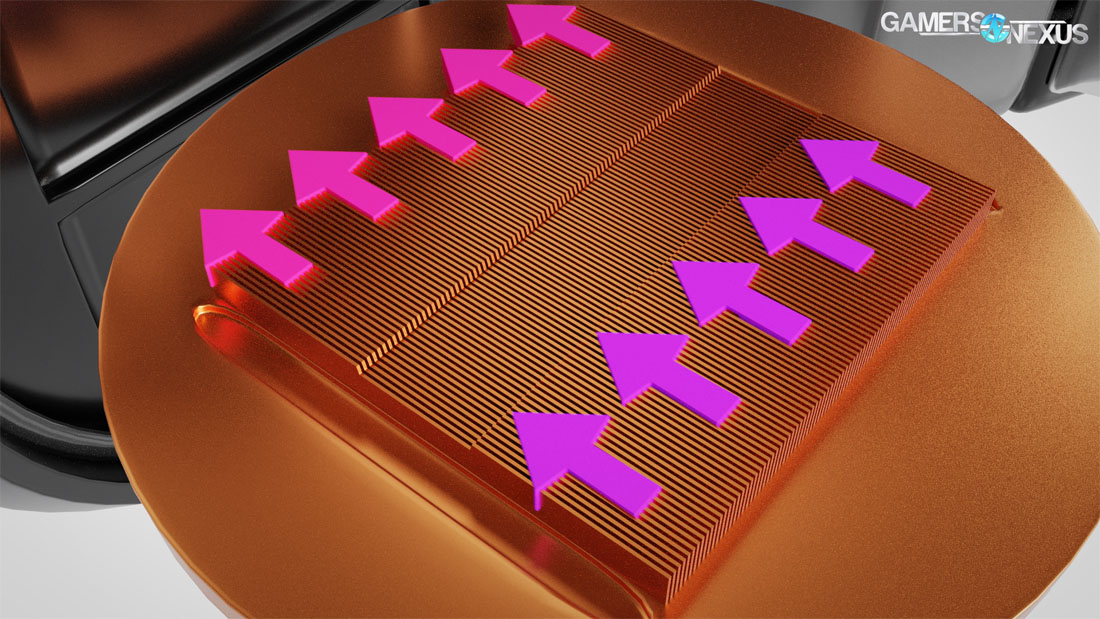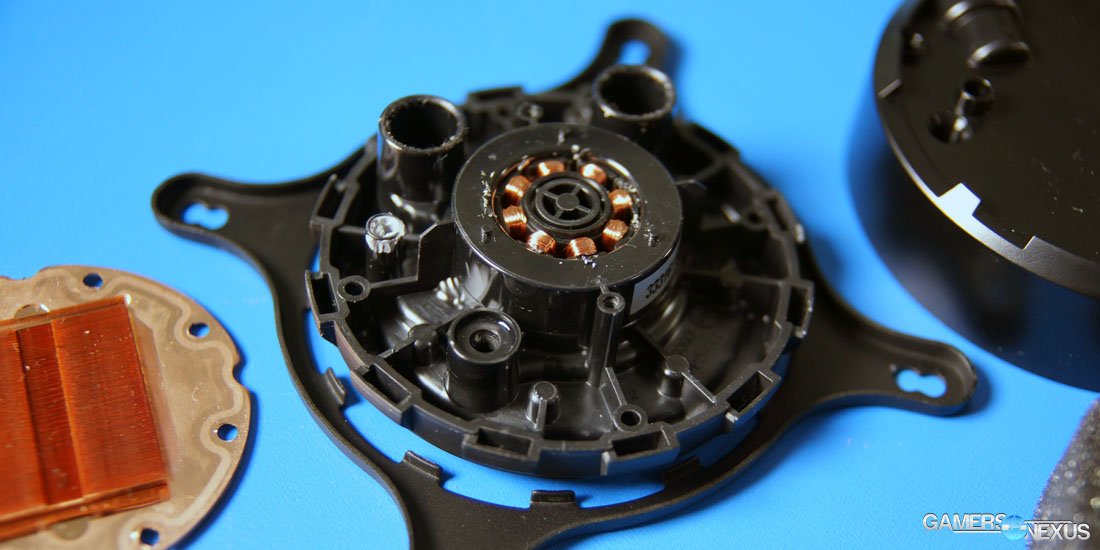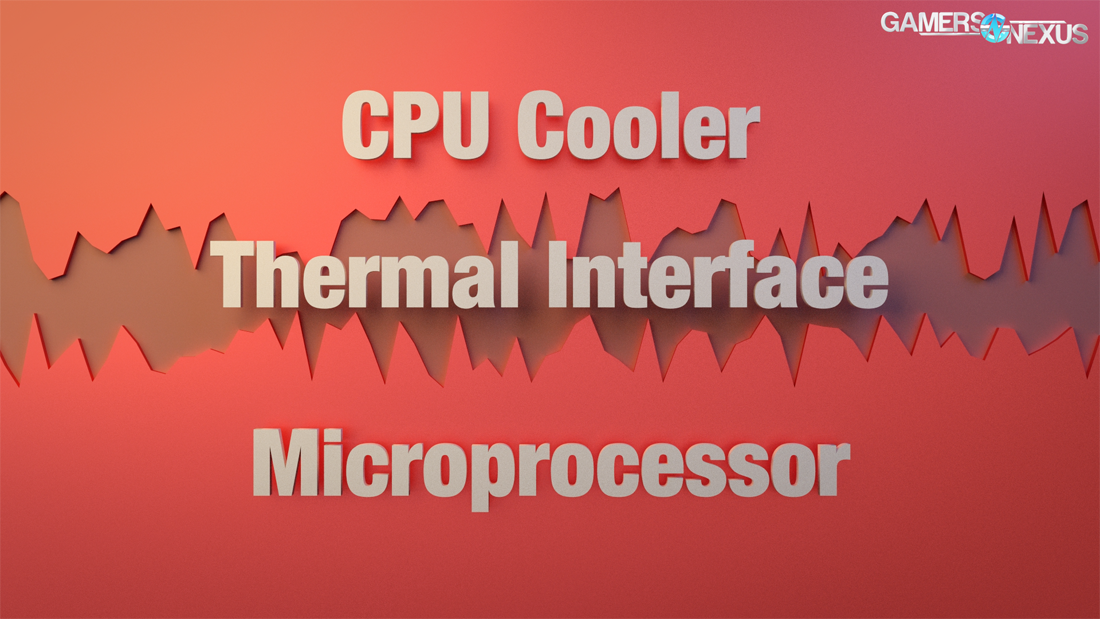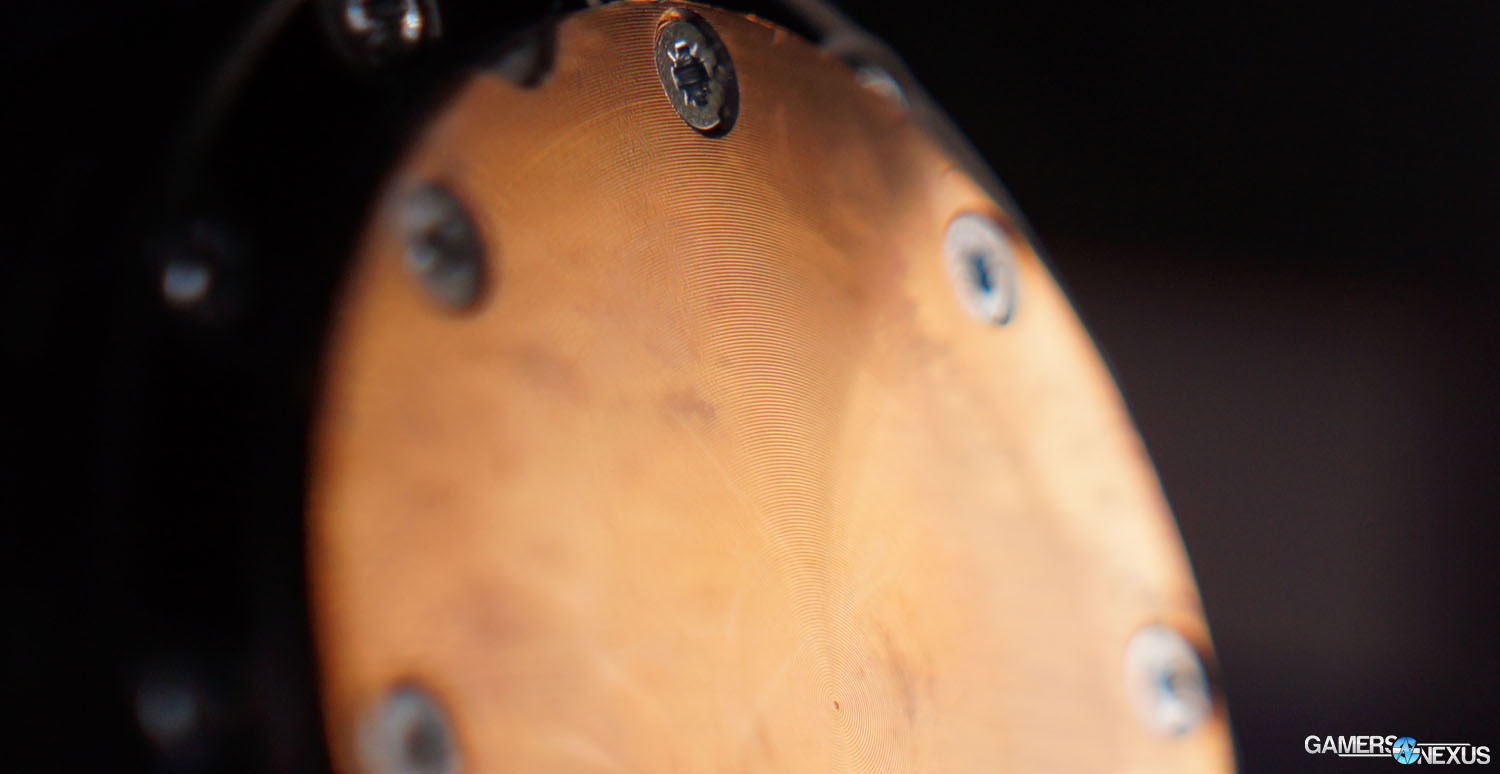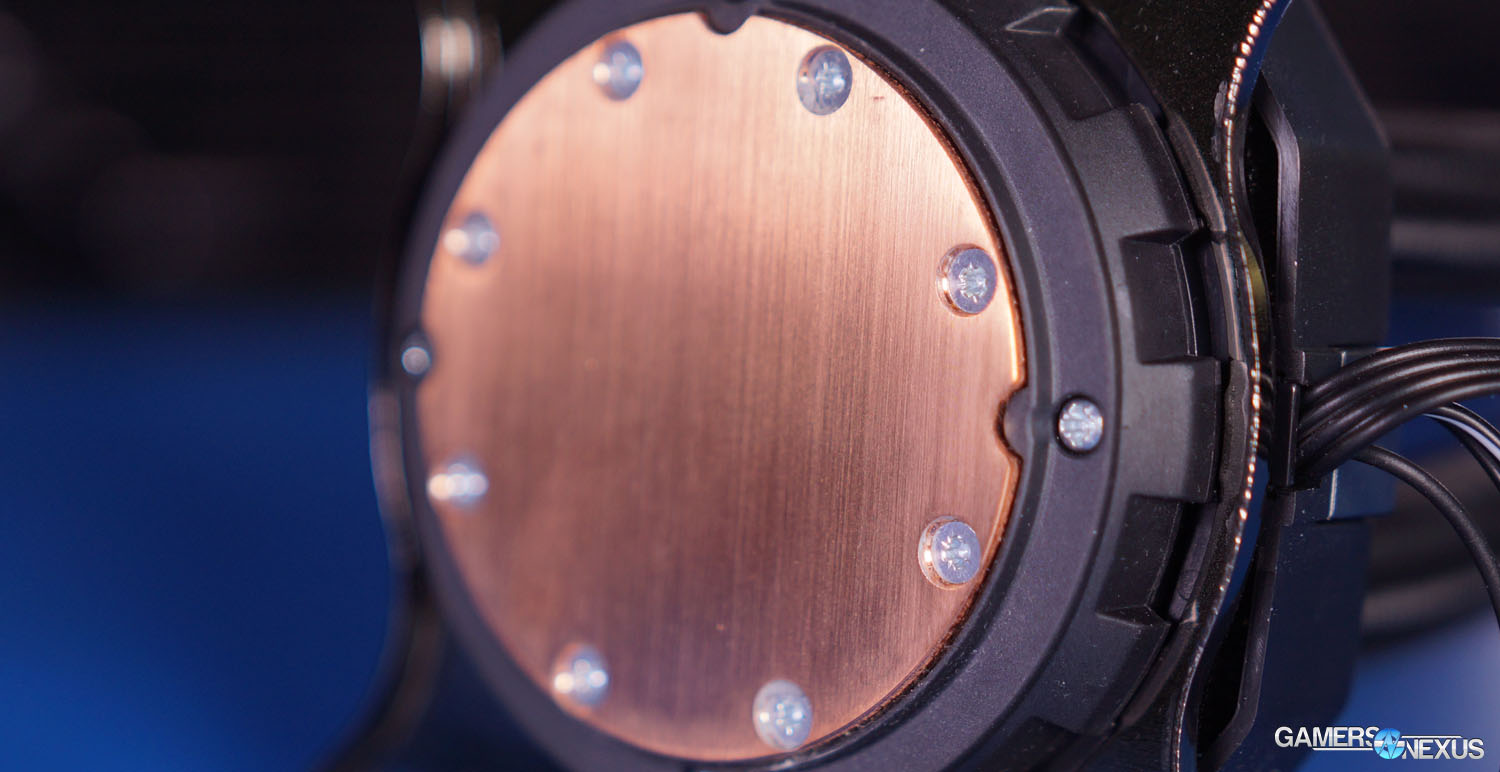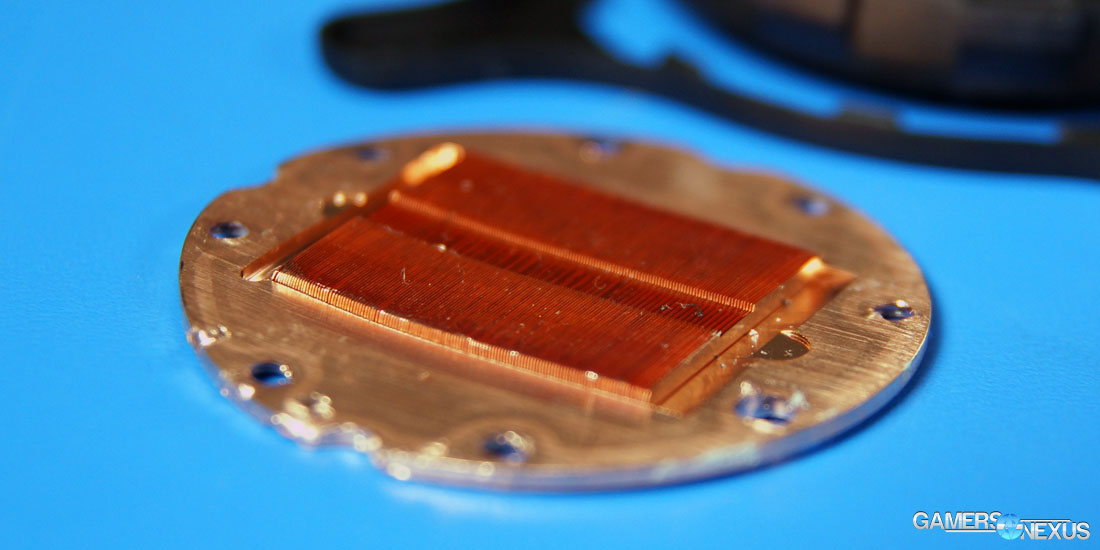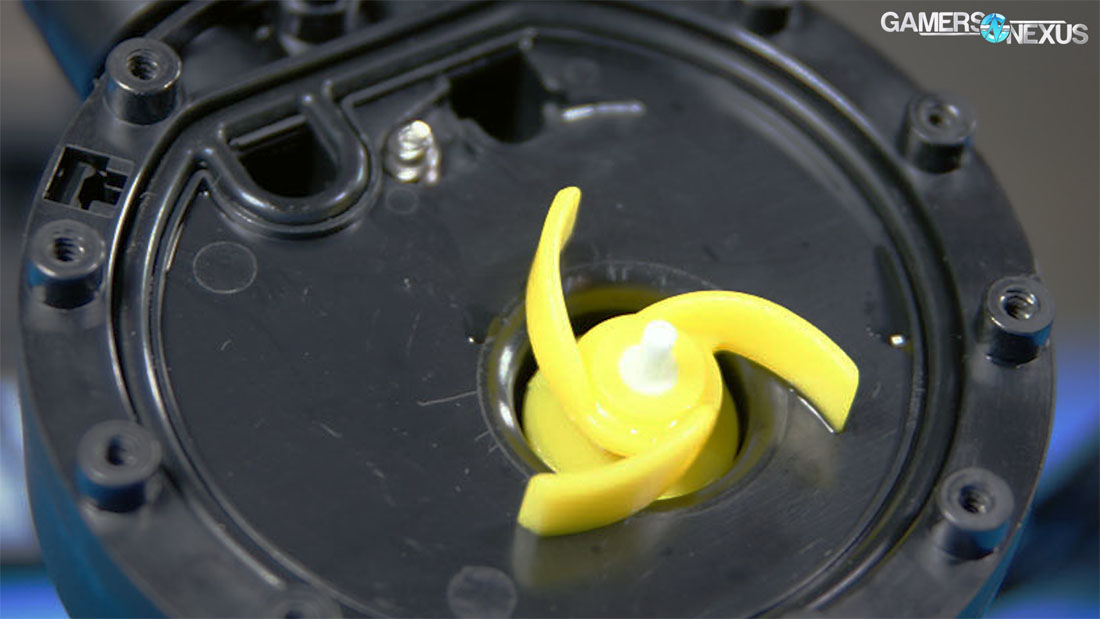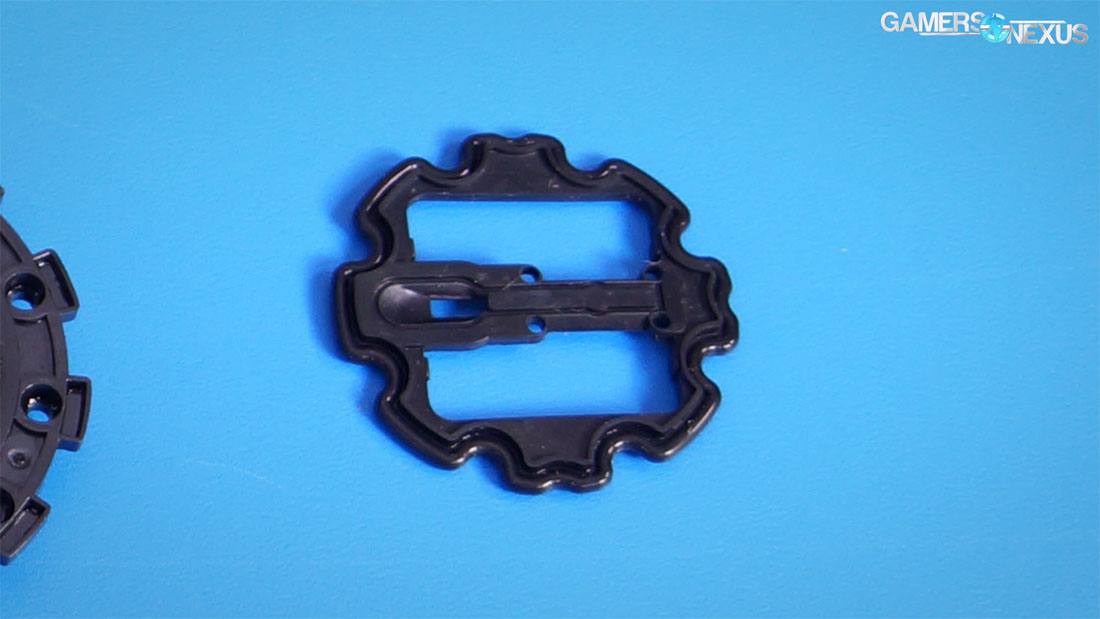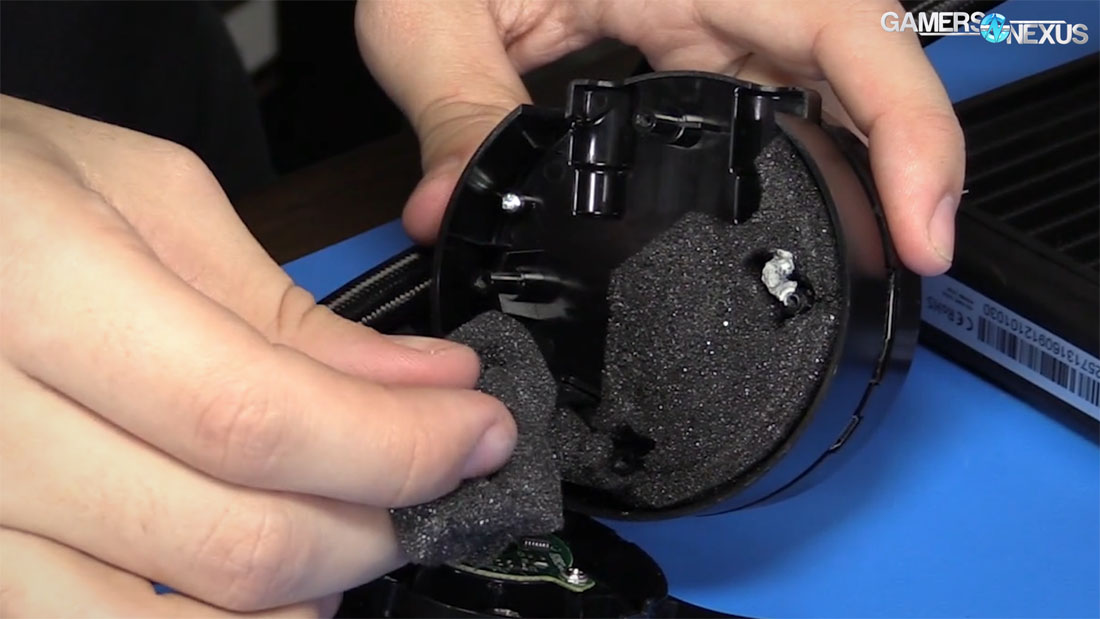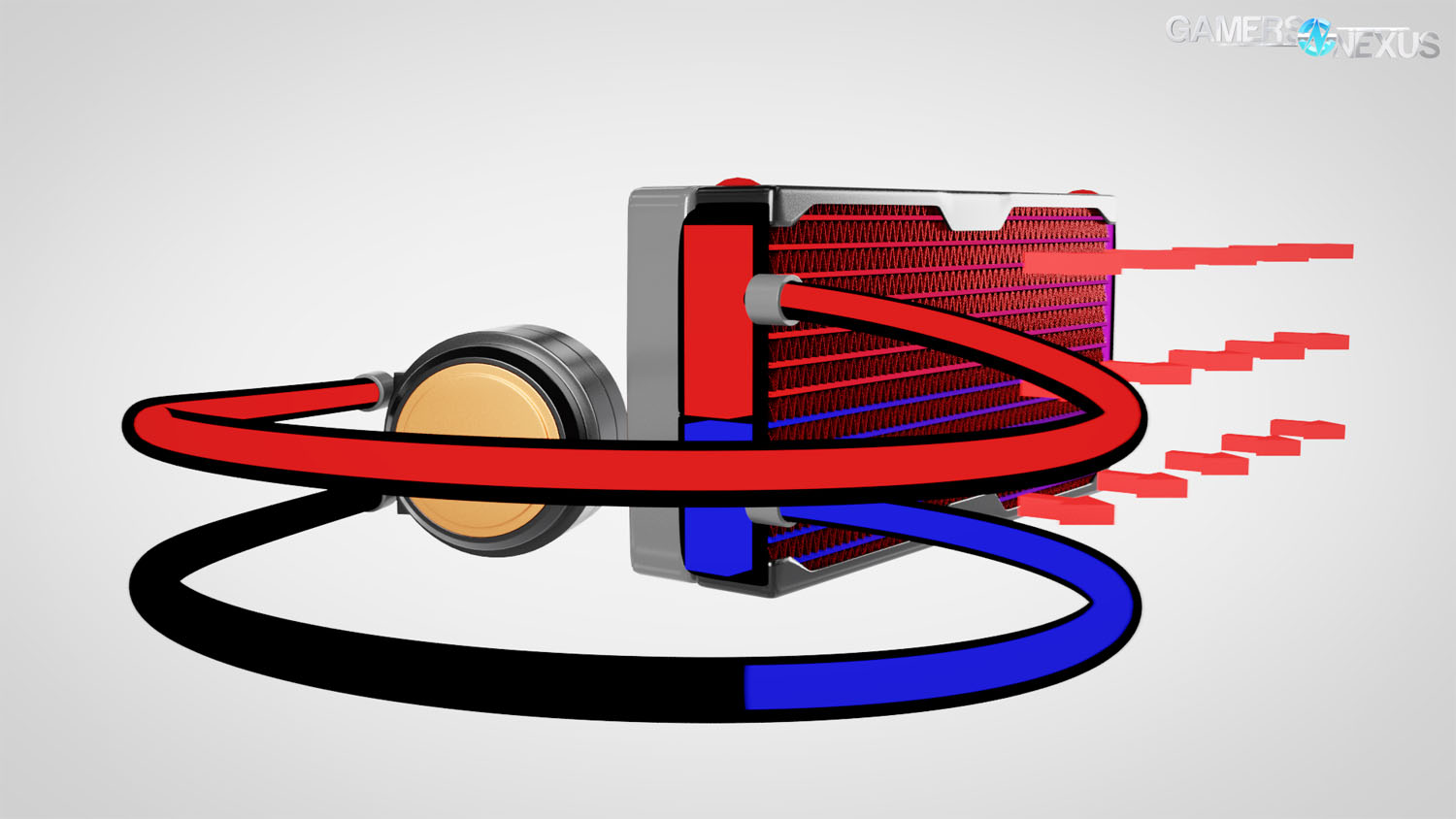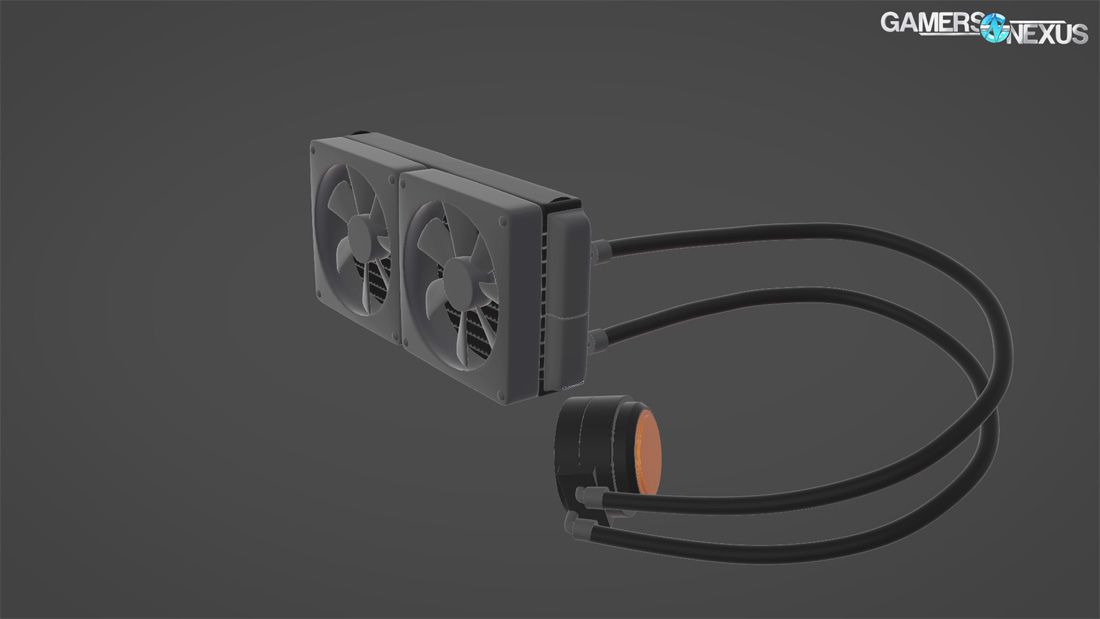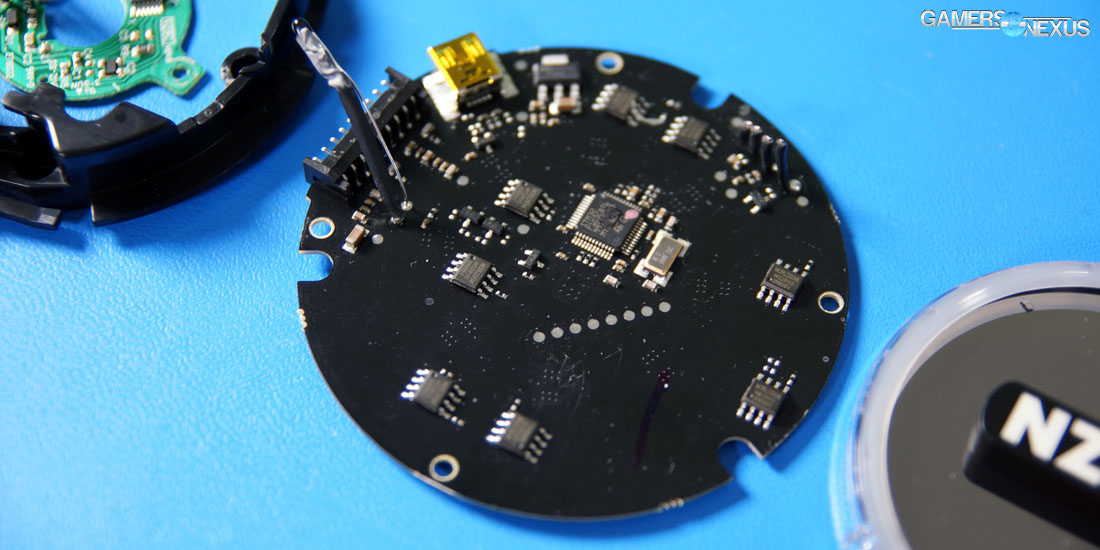When we made our “how air coolers work” video, a lot of viewers were interested in the inner workings of copper heatpipes and their various means of facilitating capillary action. Today, we’re revisiting our TLDR series with a video on how closed-loop liquid coolers work. We’ll be talking about permeation, air pockets, stators, impellers, coldplates, and chemical composition of the coolant.
This content has custom-made animations that we rendered specifically for explanation of how CLCs work. GN’s Andrew Coleman modeled and animated a closed-loop cooler for the piece, referencing NZXT’s Kraken X52. Because of the level of detail and custom animations of this content, NZXT sponsored GN to put this piece together. The content applies to all liquid coolers, but particularly focuses on closed-loop products; all concepts herein can be applied to CLCs across the industry from various suppliers and manufacturers. Our technical deep-dive for today serves as a means to fully detail liquid cooling and how it works, drilling down to piano-wire granularity (literally).
The Basics: Suppliers of Liquid Cooling Products
Let’s start with the very basics: We’ve torn apart a lot of liquid coolers, and they’re mostly the same when it comes to implementation. A few cooling products relocate the pump, but the primary function remains identical: use liquid to transfer heat to a heat exchanger, where airflow dissipates the heat. Liquid can soak thermal variance and temperature spikes in a way which air coolers cannot; even though not all liquid coolers are designed the same, this core fact remains true.
There are only a few suppliers of liquid cooling products. Companies like Asetek, CoolIT, Dynatron, and Apaltek create a semi-customizable package of pump, tubes, heat exchanger, and coolant, which is then sold to manufacturers for use in consumer products. Examples of manufacturers would be NZXT, Corsair, EVGA, Thermaltake, DeepCool, and other names that you’re all familiar with.
Asetek is the big name in suppliers for liquid cooling, particularly in the enthusiast market. Asetek is responsible for industry-famous coolers like the entire NZXT Kraken series, the Corsair H100iV2 and H115i (among others), the Thermaltake CLCs, previous Antec CLCs, EVGA’s closed-loop line, and Fractal’s new Celsius line of coolers. This one supplier makes up the majority of the market, though they are embattled with the likes of CoolIT, who make the other half of Corsair’s product, and smaller suppliers like Dynatron (makers of Antec 1250 and other pump-on-fan products). Apaltek makes Enermax and LEPA coolers, alongside others, and is another competitor of Asetek’s.
Here’s a table from our previous content entitled “Who Really Makes Your Liquid Coolers?” where we discussed the supply side of the industry:
Table of CLC Suppliers & Existing Coolers
| Manufacturer | Product(s) | Supplier (OEM) | Product Example |
| Corsair | H50 H55 H70 H75 H80i GTX H95 H105 H100i GTX H110i GTX | Asetek | Corsair H100i GTX ($110) |
| Corsair | H60 H80 H80i H100 H100i H100i GT | CoolIT | Corsair H80i GT ($100) |
| NZXT | Kraken X30 Kraken X40 Kraken X60 Kraken X31 Kraken X41 Kraken X61 | Asetek | NZXT Kraken X61 ($140) |
| Enermax | Liqtech 120X Liqtech 240 Liqmax 120 Liqmax 240 | Apaltek | Enermax Liqtech 120X ($88) |
| LEPA | AquaChanger 120 AquaChanger 240 EXllusion 240 | Apaltek | LEPA AquaChanger 240 ($80) |
| Cooler Master | Seidon 120V Seidon 120V Plus Seidon 120M Seidon 120XL Nepton 140XL Seidon 240M Nepton 280L | Cooler Master | Cooler Master Seidon 120V ($60) |
| Cooler Master | Glacer 240L | Swiftech | Cooler Master Glacer 240L ($96) |
| Fractal Design | Kelvin T12 Kelvin S24 Kelvin S36 | Alphacool | Not in US |
| Swiftech | H220 | Swiftech | Not in US |
| DeepCool | Captain Maelstrom | Could be DeepCool* | DeepCool Captain 240 ($80) |
| Antec | Kuhler 1250 | Dynatron | Antec 1250 ($98) |
| Antec | Kuhler 620 | Asetek | Out of production |
| SilverStone | Tundra TD02 Tundra TD03 | Apaltek | SilverStone TD02 ($74) |
| Gigabyte | Waterforce GPU cooler | Cooler Master | Not available |
| Scythe | Apsalus | Asetek | Not available |
| Thermaltake | Water 3.0 360 | Asetek | Thermaltake Water 3.0 ($95) |
| Intel CPU | Stock Liquid | Asetek | NA |
| Intel CPU | Stock Air (old) | Cooler Master | NA |
| AMD CPU | Stock Air | Cooler Master | NA |
| AMD CPU | Stock Liquid | Asetek | NA |
| AMD GPU | AMD R9 295X2 | Asetek | AMD R9 295X2 ($1100) |
| AMD GPU | AMD R9 Fury X | Cooler Master | AMD R9 Fury X ($650) |
You can read more about this specific aspect of liquid coolers in our previous article.
Most enthusiast closed-loop liquid coolers are made by Asetek, who make NZXT, Corsair, EVGA, and Thermaltake CLCs, among others. CoolIT is known for Corsair and data center cooling. Cooler Master makes their own coolers, and you may be interested to know that Cooler Master OEMs most of the Intel and AMD stock air coolers (with Asetek laying claim to some of the stock CLCs).
CLC Deep Dive
To get a foundational understanding, we can look at the torn-down Kraken X42 that we previously disassembled on camera. Let’s start at the CPU, then work our way around.
The basics remain the same as our air cooler animation: Heat from the CPU die is conducted through TIM or solder into the IHS, which then transfers through another layer of TIM to the coldplate.
That thermal interface helps deal with microscopic imperfections in the surface of the IHS and coldplate, but is otherwise of undesirable thermal conductivity and resistivity compared to the flanking copper interfaces.
These days, most CLC coldplates are circular and smooth, though there are older models that used a tree-like ringed coldplate. This is largely a manufacturing and production improvement in the die casting process to make coldplates, with most plates now being smooth instead of ringed. Some coldplate suppliers used to make the coldplate surface concave to better match the CPU IHS, with GPU cooling plates remaining flat. These days, with the most current generation of enthusiast-grade liquid coolers (like the Kraken X52 that we’ve modeled), those coldplates are now flat. Generally, the manufacturing complexity of the concave indent was not worth the effort, and going with a flatter, smoother surface seems to have overall equivalent or superior performance.
The copper itself is thin by design, with the side internal to the pump housing terminating in dense microfins. The density of the fins allows for greater surface area for heat spreading, with heat being whisked away by straight-flow or split-flow liquid. Surface area is critical, but so is flow impedance. Fin density and pitch impact flow-rate, which is directly controlled by pump speed, radiator design, and manufacturer spec. It’s up to the manufacturers – that’d be folks like NZXT, Corsair, and others – and their suppliers to work together on a custom solution for the product.
Some coolers, but not all, will use a rubber gasket for split-flow circulation. This sits between the housing and the coldplate, and directs liquid down the center channel. Split flow minimizes dead zones on coldplates, though straight flow is an alternative that is also commonly used.
As for liquid movement, that’s pushed around by an impeller. The coolers that we’ve dismantled lately all use an 8-pole impeller design, including the NZXT Kraken series, Corsair H100iv2 and H115iv2 coolers, and EVGA CLC products. This also means that your BIOS readings of pump RPM will be incorrect, since BIOS is expecting a 4-pole fan PWM but receiving 8. Some new motherboards have headers explicitly labeled as “AIO” or “pump” headers, in which case there may be some calculations to correct for this.
The maximum 12v pump RPM in most enthusiast-grade CLCs tends to be in the range of 2800-3000RPM, with the gen4.5 EVGA GPU cooler at 3600RPM. To help mitigate the noise impact from a high RPM, several cooling OEMs use a layer of foam padding between the pump internals and outer shell. Our torn-down X42 shows a big foam block used for this, aiding in vibration and noise reduction.
Above: A rubber gasket that goes on top of the coldplate.
Below: Foam block to help damp noise.
Anyway, liquid moves up one tube and into the water tank on the radiator, which has a partition wall down the middle. The tube mounts to the radiator on a barb, which generally are either 3-flange or single-flange designs. The single-flange designs are used most commonly in server and data center use cases, with Asetek’s leveraging piano wire to pinch the tube like a clamp. This helps sustain higher pressure in failure events, though 3-flange barbs are still rated for several times the pressure of what would ever be experienced in an enthusiast desktop.
As the warm liquid feeds into the radiator, it travels down roughly half the channels and to the other side. This is the cooling process. Aluminum fins conduct the heat away from the channels, then radiator fans dissipate that heat from the fins. At the end of the channel, the liquid does a U-turn and travels back down to the return side, receiving one more pass of cooling. At this point, the liquid should be nearing its lowest temperature. That tends to be around 26-32C, depending on the chemical composition and the heat of the CPU cooled.
As for the liquid used, that’s a mix of propylene glycol and distilled water. Some manufacturers will specify a higher percentage of glycol in the mix, which will help the cooler better withstand extreme temperatures – like -40C, for example. Most coolers are able to take around -20C, which is a good balance between not freezing during shipping and the improved cooling potential of a higher distilled water concentration.
Finally, tubes are generally made of either FEP or EPDM rubber. The more rigid tubes tend to be FEP, which has excellent reduction of permeation, but less flexibility during installs. Kinking an FEP tube will result in cracking the inner PTFE coating, which results in permeation and poor cooling ability. EPDM tubes have the opposite set of pros and cons: They won’t really get damaged if bent and are more flexible, but it requires an expensive R&D process to get the compound to a point of resisting permeation. Ultimately, all tubes will exhibit the effects of age and will slowly lose fluid to natural processes. It’s just a matter of how long they last. Most CLCs are rated for use in the 4-6 year range, though it’s around years 4-5 that noise begins to get more noticeable. This is because enough of the fluid has permeated the tubes to allow for more air in the line, which gets sucked through the pump and causes gurgling. Users can mitigate this by mounting the tubes down in a vertical CLC install.
Finally, all these CLCs, regardless of manufacturer, have some sort of PCB in them. The PCB is responsible for hosting the pump firmware. Some companies will embed a custom PCB for things like RGB lighting or custom pump speed profiles, while others may use PCBs with user-serviceable firmware. Some of these boards have memory on-board that stores profiles, eliminating the need for a permanently connected data cable. NZXT uses a custom PCB for their Kraken series coolers, while most other manufacturers use a supplied PCB from Asetek or other suppliers. The EVGA and Corsair PCBs, for instance, are largely the same but with differing firmware.
That should get us started on how liquid coolers work. Many of these concepts also apply to open loops, though there are some critical differences there. We’ll save that for another time.
Editorial, Research: Steve Burke
Video Production, Animation: Andrew Coleman
